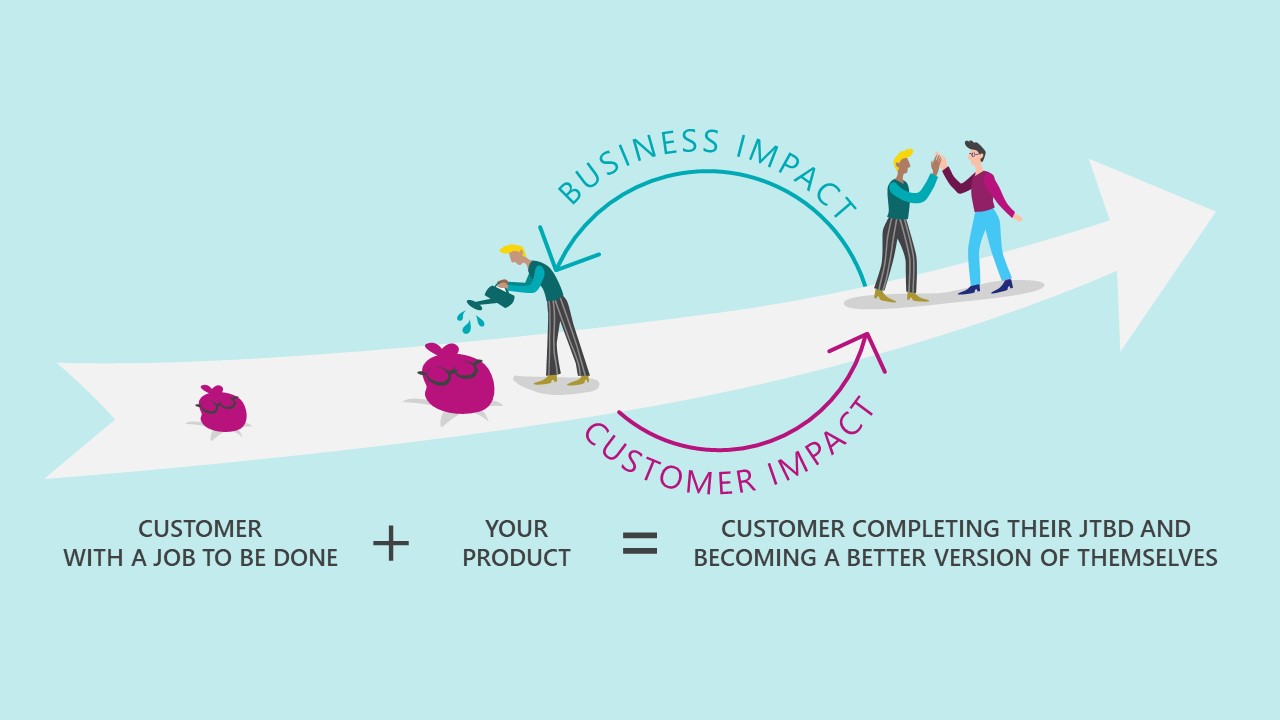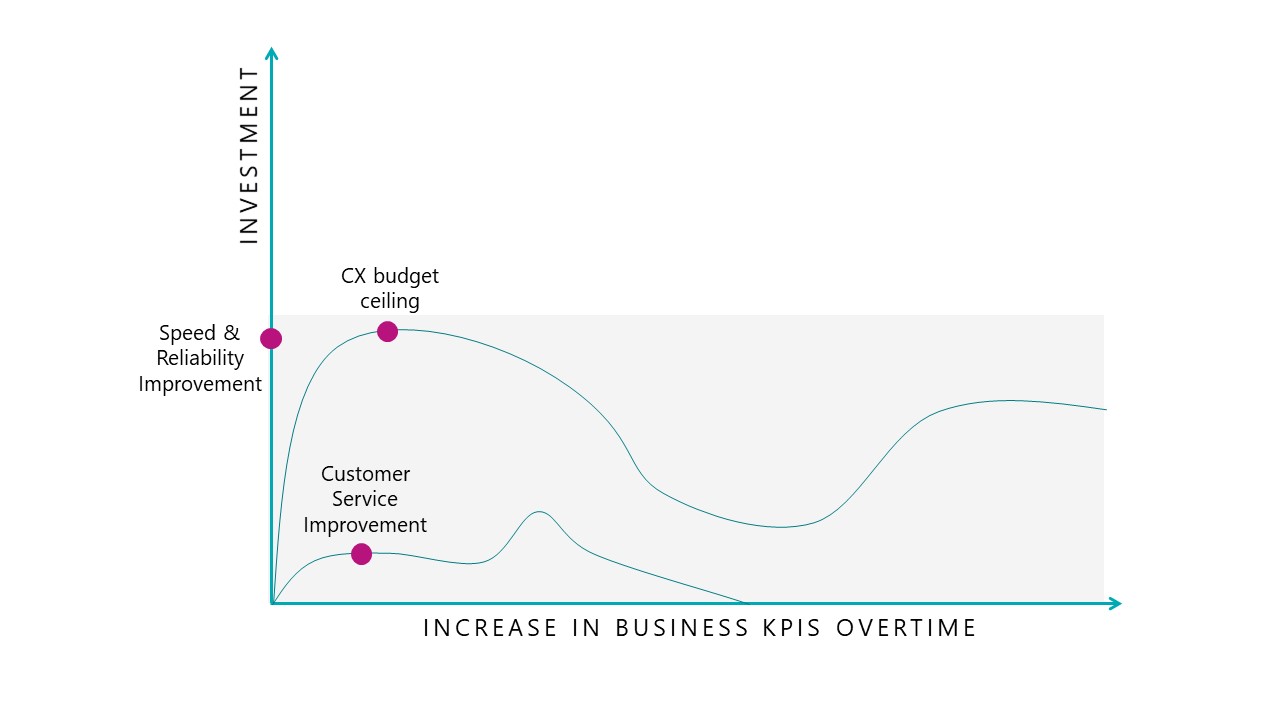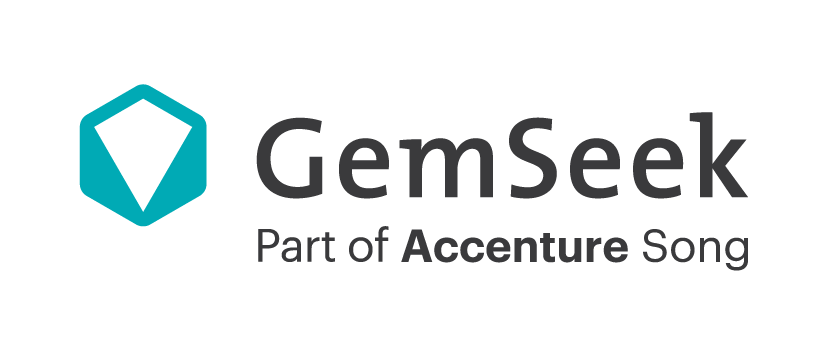CX Impact: The Missing Ingredient
A study after study shows that customer experience management is growing in importance for companies.
Yet, understanding customers and implementing measures to improve their experience remains a major challenge for CX leaders. Many companies engage in an endless stream of projects to enhance CX, only to see them not moving the needle a notch. Initiative after initiative delivers less improvement than expected. And even projects that make perfect business sense and are properly resourced end up underutilised. This results in wastage of energy, resources, and time, and ultimately in less than ideal customer experience.
I believe there is a way out of this conundrum.
The way forward is paved by one single question: how can we make a positive impact on our customers and our business.
The way forward is underpinned by a theory of what delivers value to customers and businesses alike that have been around for years now. It is inspired by our common desire to engage in activities that make an impact and get measurable results. It is grounded in a pragmatic view of business reality in which we need to make trade-offs. And it is made real by the ever-growing amount of data available and our ever-growing capabilities to identify patterns in it.
Creating value
In the business-customer relations, it is customers who hold the genuine power in this relationship – it is they who reward or punish companies by buying their products or not; it is customers who decide which businesses will survive and which will fade into obscurity.
As a result, all businesses value what customers value, for this is the only way by which they can generate their lifeblood – revenue and profit. Customers generate value for businesses by continuing to purchase the products and services, by spreading positive word of mouth, by potentially being willing to pay more for the same product or service, and by purchasing additional products and services from the same company. Assuming that the company’s operations are efficient, with this increased demand it should be able to generate higher profit.
What customers value is a trickier question.
By definition the abstract answers seem to be rather generic and confined to statements like CX should be seamless and easy. Fair enough, it should probably be like that. But such answers will have a hard time explaining why the iPhone is so popular, for example, for acquiring it is not such an easy feat – think about the queues in front of Apple stores to get the latest iPhone; or the price of the device;or that an Android user will have to switch to a completely unique ecosystem of apps. None of this is easy, yet people do it en masse.
So what do customers really want?
The framework I believe is best positioned to answer the question about what customers value is the Jobs to be done approach. It is also the approach that in my view maximises the value both businesses and customers get out of the exchange.
What is a job to be done?

For companies, this is most often economic impact. For customers, it is most likely to be a step towards who they want to become as human beings.
In essence, companies want economic benefits, and customers want to get a job done; a job that they think or feel would take them closer to becoming who they want to be in life. This is the value a mutually beneficial economic exchange creates – profit on one side, and advancement and progress in life on the other.
Theodore Levitt helped us make advance our understanding of customers when he said that people don’t want quarter-inch drills but quarter-inch holes. It is due time though to take this one step further. People don’t actually want quarter-inch holes. Unless they just love having holes on their walls there is something more they are after. People actually want their favorite painting hanging on that wall. In an exercise similar to the 5 Whys, one is tempted to go even further than this: people want their home to look beautiful or to feel a sense of awe every time they walk into their living room.
Don’t build better cameras – build better photographers. — Kathy Sierra
What do customers get instead?
They get features. Tons of features. Let me ask you this: how many of the features of your microwave have you ever used? And how many of the modes of brushing your electric toothbrush have? How many of what an average hotel provides besides a lobby bar, a bed, and a bathroom do you use on a business trip?
And we, customers, get charged for exactly this – for the product, not for the hole, and neither for hanging the painting there. We are not charged for the value of the product or the service – we are charged for what the company can control – for its product or service. This is changing. An early sign that the paradigm is shifting is for example Marto Bertini and Oded Koenigsberg’s book “The Ends Game: How Smart Companies Stop Selling Products and Start Delivering Value”.
We are not there yet; it is likely that we will stick to the current model, already being disrupted by the subscription business models, for quite some time. But some companies are already bravely entering this new era in which businesses charge for the value they deliver. Take my favourite example:
Teatreneu, a popular comedy club in Barcelona, put this proposition to the test as part of an effort to combat declining audience attendance. It charged each customer 30 euro cents for every laugh during a performance, up to a limit of €24 (US$28.47). Facial recognition technology was fixed to the back of the seats to capture the reactions. No laughs, no pay. Overall ticket prices increased by €6 (US$7.12), and attendance rose 35 percent.
How does the Jobs to be Done approach helps companies connect with what matters to customers? The brief answer is: by helping customers improve their life.
A better camera is not an end in itself; it is merely one way to get a job done – to take better photos.
Other ways to achieve this is by looking at and studying what the best photographers in the world do; so is attending a photographic course; and so is picking up the camera, taking photos, and showing them to a photo mentor to get advice. Realising this clarifies that what who you think is your competitor in the conventional sense, might not be your major competitor.
There are usually plenty of ways to get a job done, and your product or service is just one of them. The line of thinking Jobs to be Done unlocks, in a nutshell, opens myriads of avenues for companies to better serve their customers.
Another point on which the Jobs to be Done approach differs from others is the assertion that “circumstances are more important than customer characteristics, product attributes, new technologies, or trends. This is an important change in perspective, for it leads us to consider closely how exactly are customers going to select and apply the solution.
We often times expect customers with different socio-demographic characteristics to expect different things from a product, yet it turns out that their requirements are by and large the same. From the Jobs to be Done perspective, this makes perfect sense – customers are faced with the same job to be done, hence their similar expectations from the solution. In other words, investigating the situation the customer is in gives us more knowledge compared to, say, knowing their level of education, or where they live.
A vital implication from the Jobs to be Done approach is that it promotes a realistic, ultra-pragmatic view of the world.
By starting with what the customer is trying to get done, it focuses our attention on what really matters right now. Not on what fancy feature we can add; not on what delightful addition we can make to our customer journey; and not on building nice-to-have products and service. The Jobs to be Done approach allows us to focus on the real pain and the real advancement a real person is trying to make a reality. And this is extremely important for our conceptualisation of what the customer experience we provide could look like.
Great CX or appropriate CX
Often companies create customer experience improvement programs with the goal to provide Great CX. This is by all means an admirable goal, yet there is something missing there.
On one hand, Great CX is too generic to inspire adequate actions and initiatives. I think we will be better off if we create a customer experience intent statement instead. What is a CX intent statement? Simply put, “It is an inspirational and aspirational statement of the desired emotional and experiential journey your customers will have as they interact with your brand. In a sentence or two (maybe a paragraph), this statement describes the experience you plan to deliver, with a specific focus on the feelings and emotions that the experience will elicit, at every touchpoint, during every interaction with your organisation.”
What’s beautiful and helpful in a CX intent statement is that it is situated one level lower than a CX vision, which makes it much more actionable. And importantly, it helps companies align the design of all interactions (and products) around this statement. The CX intent statement becomes the North Star of everything customer related within a company; a check all that a company does needs to pass if you will. Let’s say that a company decides that it wants its customers to feel inspired and revitalised whenever they encounter the brand.
This becomes the question everyone within the company needs to ask: Is this interaction making the customer feel this way? Is this advertisement making people feel inspired and revitalised? Is the colour of our product helping to evoke these emotions? Is our website conveying this message? Remember, everything communicates – from a customer perspective all interactions convey a message and it is vital that we align as much of the messages as possible.
‘Great’ in the sense of fantastic or exceptional might be a poor description of what customers are after. By all means, from a customer perspective, more is better – if one can get a premium car for the same price as a low-end one, no doubt the premium would be preferred. But this is rarely, if ever, the case. In most cases we as customers need to make trade-offs so we adjust the job that we are trying to get done accordingly; our constraints become constraints of the task at hand and the solutions we seek.
In this provocative piece , Sampson Lee argues for example that “Ryanair has long been criticised for its poor service and is commonly regarded as delivering bad customer experiences. But there’s a train of thought that suggests, contrary to this, Ryanair is in fact a customer experience success story.” This makes perfect sense if one thinks of it from the perspective of Jobs to be done.
Ryanair creates value for customers by stripping the flight experience of everything that is rather non essential and lowering the price. Do customers tell their friends what an amazing experience flying with Ryanair is? Probably not. Do they keep flying with it? Probably yes. Why? Because the job to be done is to travel to a certain location to take a break or do business or whatever. The flight itself is not the job – it is the solution, and one that Ryanair has found how to optimise. Couple that with operational practices that allow the company to achieve extremely high levels of efficiency and you get a perfectly viable business built on less but ‘great’ CX (again, great in the sense of exceptional).
From that perspective, it is an “Appropriate” or “Fitting” CX might be what companies need to be after, not ‘Great CX’; i.e. customer experience appropriate to what the customer is trying to accomplish and the job they are getting done.
Deliberate actions & intelligent trade-offs
Now, just as customers face trade-offs, so do companies – there is rarely a situation in which we have all the resources that we need. Two sayings capture the essence of the choices companies are facing very well.
On one hand, as the saying goes, there is over one way to skin a cat. This applies to customer jobs to be done and to business ones. From a customer perspective, this means that there is always a different way to get the job done (except for super-inelastic goods like electricity and water). If you are having coffee to give you energy and to refresh yourself, well, maybe a glass or orange juice might work as well. Or, speaking from experience, if you want to hang a painting you might go for a simple nail or for the more expensive but more beautiful rail system (the kind they have in galleries).

Same goes for businesses – there is always over one way to design a solution for a job or to improve on it. Think internet connection at home. Perhaps some people want to have a faster one, and others might opt for more reliability; still others might look for a price. Though, the decision is likely to be based on the combination of these factors and not on every one of them on its own. After all, who wants a super fast connection that is not working half of the time? It is this optimal combination of parameters that companies are after.
The other principle on which we already touched upon is that we can’t have it all, or rather – we cannot do everything we want at the same time. Trade-offs are to be made and they need to be appropriate ones so as increase the value and the impact of the product or service. The key question here in business as in life is this: If we are doing this, what are we not going to do? This also refers to the point we made previously if you increase the speed of the connection by 5%, which requires an investment after all, what are you not going to do? What are you not going to improve to make this increase in speed a reality? Or vice versa, if we invest in making our network more reliable, what are we not going to do? Maybe we will not invest in this customer service reps training, which will diminish the quality of issue resolution. Or maybe we will have to keep the speed constant for 6 months? Or maybe we will have to charge slightly more? Whichever it is, there is a choice to be made, and we’d better make the options explicit.
Sometimes a trade-off might not be as simple as choosing between customer service and speed of connection. In the customer’s mind things are often interlinked in ways you might never suspect.
That’s why we usually go one level deeper and understand the second order reasons and motivations with a method called “Root Cause Analysis”.
To sum it up, 1. there are many ways to achieve the same result and 2. in deciding which way to go we will always have to make trade-offs. Couple this (perhaps) ultra-pragmatic view of reality with profound knowledge of what the customer is trying to accomplish, and a powerful framework for achieving business results emerges.
CX impact in practice
So what is a CX leader to do given this view of generating customer and business impact via customer experience? Here is my suggestion:

Ground Zero and a Premise for All the Other Points: Underpin All That You Do with Evidence
I’m personally a strong proponent of using quantitative evidence, i.e. data, but I also appreciate that a lot of insights come from qualitative techniques like participant observation and in-depth interviews. In my experience, text analytics can often strike the right balance between the two – people share amazing stories online, for example; these stories come very close to what they would share in an offline environment. The sheer volume of what people share online makes it possible to analyse it using the state-of-the-art data analytics techniques.
Step 1: Understand the Customer’s Job-to-be-Done and Benchmark Your Product or Service Against it and the Competitors
By now it should be clear that we need a thorough understanding of what customers are trying to accomplish. If we want to build a viable business, we simply cannot disregard the circumstances in which customers live their lives; we need to know them almost intimately to contribute to their success. Once this knowledge is in place, complement it with insights on how well does the solution you are delivering gets the job done. Seek to understand if customers are happy with what they get and what else constitutes a pain point for them. Equally important to this is knowing if someone else is providing a better solution than you. Benchmarking yourself against the competition is crucial as it tells you how far behind or (hopefully) ahead you are and what you need to do to catch up.
Step 2: Build a Long List of CX Improvement Initiatives
At this point in time you already know what the customers are looking for, how well is your solution working, and whether the competitors are doing something better than you. Armed with this knowledge, you can now generate ideas for improving on the domains that you identified. What is vital at this junction is to start with an open mind and think about solutions from various angles. Remember, there are many ways to achieve the same thing.
Step 3: Prioritize and Create a Short List of CX Improvement Initiatives
This step is absolutely crucial for maximising the impact of your actions. What I advise you to do it to simulate the impact of CX improvement initiatives on CX (or measure the impact of initiatives already in place). Thinking in scenarios helps here – remember that you would have generated a really long list of improvement initiatives at the previous step. What needs to be done now is do an intelligent trade off and pick the actions that would have the highest impact. Unless we think of these initiatives in combination and run scenarios to understand their combined impact, we are unlikely to make an optimal selection. A host of analytical models can support this task and it is vital that we employ them to better gauge the potential of the CX improvement initiatives. And finally, as any good start up would do, test, test, test.
Step 4: Scale Up
Once you know which actions work, it’s time to scale up. At this step it’s a matter of finding ways to automate at least part of the initiatives and apply them at a bigger scale. Predictive and prescriptive analytical models can support this task by picking up on what worked with whom, when, and where, and finding similar cases in the rest of your customer base. In essence, you would take a solution that worked for a subset of customers, look for customers with similar characteristics outside of this subset, and apply the same solution. In such instance, Predictive NPS® will allow you to amplify the benefits of your CX program through improved retention and increase satisfaction scores. You can immediately start seeing results in increasing the revenue generated by customers, and reduce the cost-to-serve.
Step 5: Measure the Economic Impact
While we are going through this process it’s paramount to remember that we are doing what we are doing with two purposes – have a positive impact on our customers and have a positive impact on our business. I cannot recommend strongly enough to try and find business metrics you can tie CX improvements with, and to establish a good process and analytics to connect the two. Retention, acquisition, cost to serve, and word of mouth would be the usual suspects for economic impact metrics, but don’t limit yourself to these. Connect CX initiatives to whatever metrics make sense for your business – just make sure that the two are connected. If you’ve created the initiatives deliberately, thinking about their economic impact from the onset, this should be a totally doable task.
Manage the CX Impact Process with an evidence-based advice tool
Evidence First
Not necessarily quantitative data, although I’m certainly a huge proponent of it, but definitely some kind of evidence. Still, keep in mind that data is input for your thinking. And thinking is the job you, me, and everybody else needs to get done.
Think in Scenarios
Don’t be fooled by single-item solutions or ‘the one thing that you need to do’. There is always more than one way and always more than one thing to be done. Try and discover the combination of actions that results in the highest customer and business impact.
Be Deliberate
There needs to be a North Star for all of your efforts. No one won a gold medal by trying a bit of everything – on the contrary, winners win by focusing fiercely on what they want to win in.
Consistency is Vital
Consistency in time and across teams and transactions is what amplifies your message and what ultimately creates the customer experience you want to create.
Your Direct Competitors are not Your Only Competitors
As Alan Klement shows, coffee competes with kale in the ‘refresh myself’ job to be done; and frankly, my partner competes with Netflix during dinner in the ‘entertain myself’ job.
Predict the Impact of Your Actions
Whilst never perfect, these predictions will give you a guidance for selecting the most impactful course of action.
Look for Ways to Scale Up
Start small but always look for ways to maximise the impact by automating and scaling a process or action that works.
Monitor the Impact on Business
This is vital for otherwise you just don’t know if you are moving the needle you want.
Create CX Business Plans
Put all the ideas you have into a 1-Page business plan and compare them to select the ones that will yield the highest impact. You can use this CX Impact Canvas as a template, for example.



